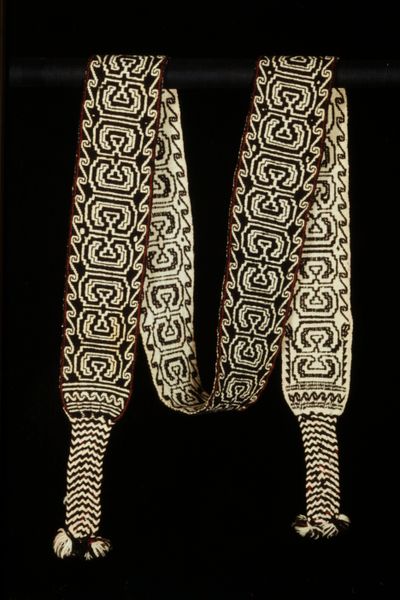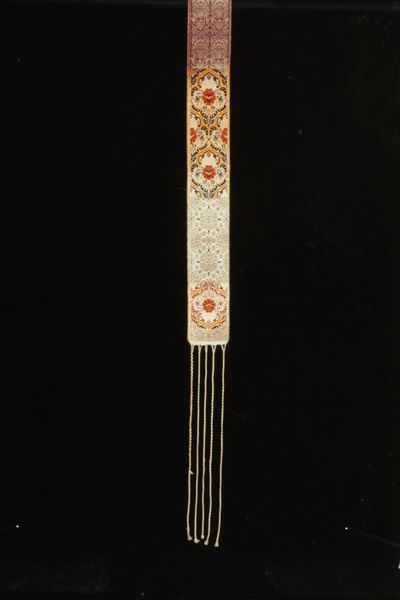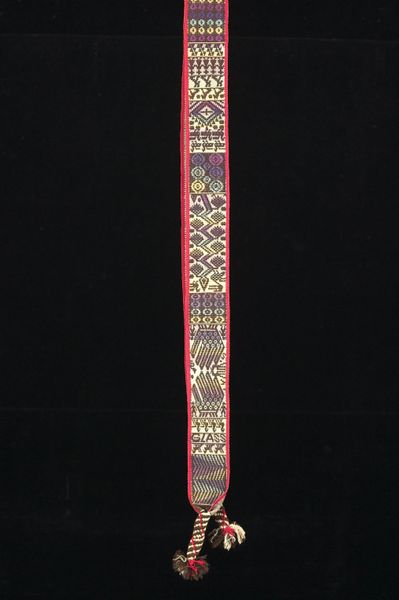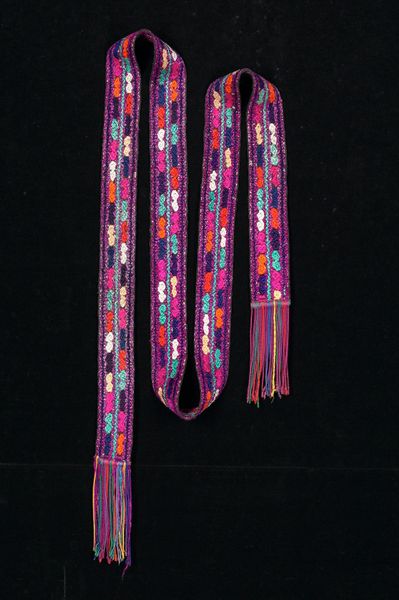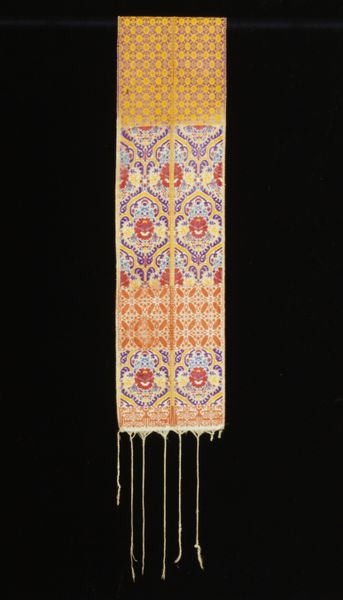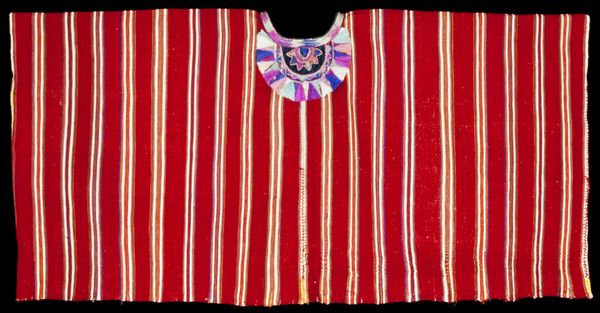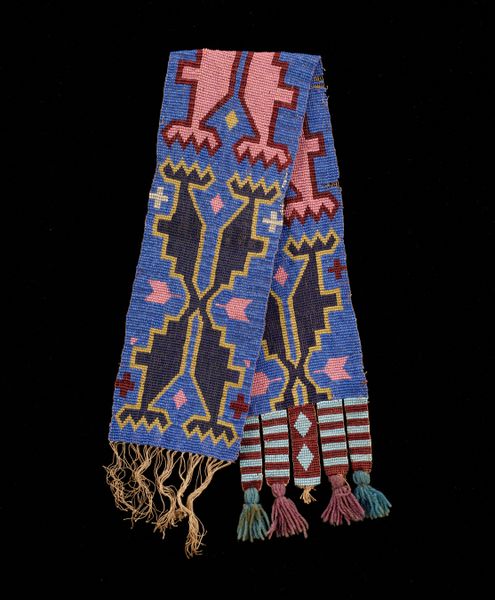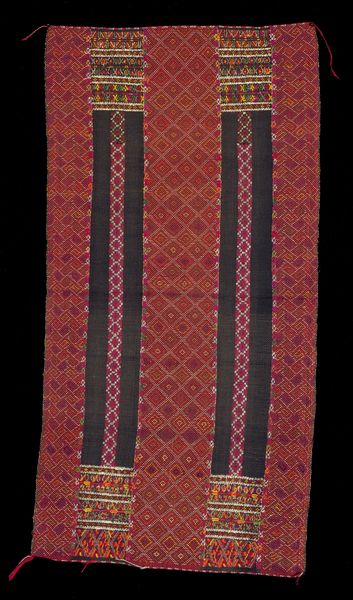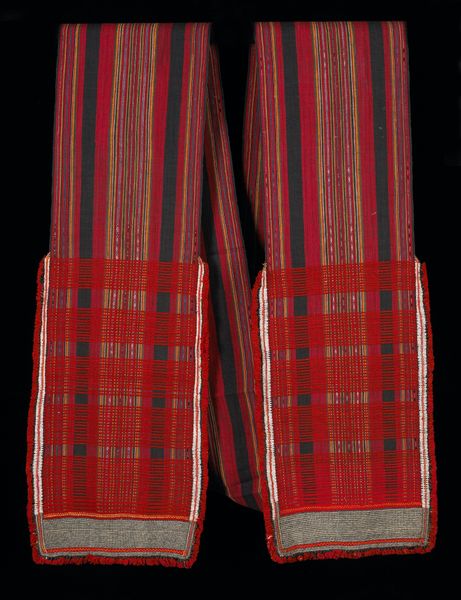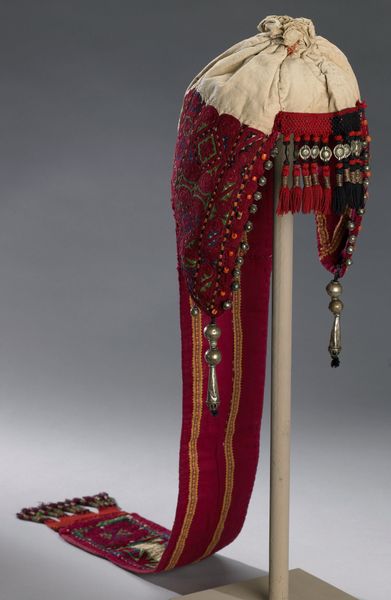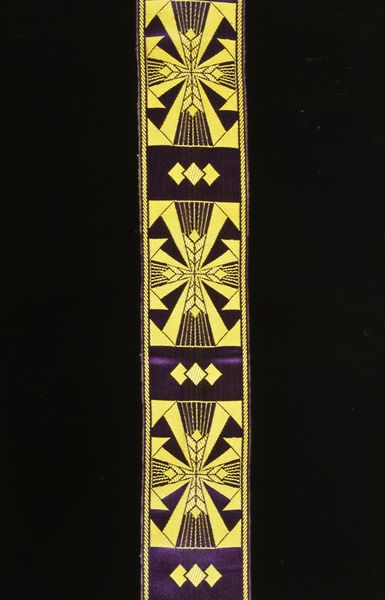
fibre-art, weaving, textile, cotton
#
tribal design
#
fibre-art
#
weaving
#
textile
#
cotton
#
textile design
#
indigenous-americas
Dimensions: 93 x 1 5/8 in. (236.2 x 4.1 cm)
Copyright: Public Domain
Editor: Here we have a Woman’s Belt, or "Faja," created around the 20th century, location is Minneapolis Institute of Art. It's crafted with mixed media like silk, wool, cotton and other textile elements. What immediately grabs me is the incredible detail and obvious time investment in creating this functional piece of art. What do you see when you look at it? Curator: I see the confluence of labor, material, and tradition. Think about the entire production chain. Someone raised the sheep, sheared the wool, spun the yarn, and dyed the materials, not to mention cultivation of cotton. It represents indigenous labor practices and material knowledge accumulated over generations. Editor: That makes me wonder, do you think the materials available in that period might have influenced the belt's design and patterns? Curator: Absolutely. Access to specific dyes, types of wool or cotton, or even silk through trade networks would have shaped the aesthetic possibilities. The geometric and floral motifs weren’t just artistic choices, they reflect what could be achieved with the available tools and materials. Furthermore, how readily those were availble informs ideas around access and the economic status of its potential wearer. Editor: So, this belt tells a story that extends far beyond just personal adornment? Curator: Precisely! It embodies the social context, the means of production, and the value placed on skilled labor within the community. It challenges a Western art historical focus on paintings, instead elevating textile art into conversations of meaning, labor, materiality, and use-value, challenging the traditional hierarchies between art and craft. Editor: Wow, I’ll never look at textiles the same way again! Thinking about the sheer effort really shifts my perspective. Curator: And hopefully, that shift allows us to recognize the embedded cultural and historical narratives within even seemingly simple objects. The beauty, ultimately, lies in the complex web of creation.
Comments
No comments
Be the first to comment and join the conversation on the ultimate creative platform.
